
Green Architecture: How Our Cities Are Getting in Touch with Nature
September 2, 2022
Architects and designers are increasingly shrouding and softening the hard-edged stone and concrete planes of urban buildings with lush vegetation. The first shoots of this green architecture trend sprang up in the 1980s, which saw the construction of the first vertical garden in Paris’s La Cité des Sciences et de l’Industrie, designed by botanist Patrick Blanc. Since then, vertical gardens have burgeoned, morphing and expanding into a relatively new phenomenon—the vertical forest.
This move towards green architecture is becoming increasingly ambitious from high-rise apartment blocks and buildings that house both residential and cultural facilities to entire cities. While the modern metropolis was once metaphorically dubbed a “concrete jungle,” a new breed of city is starting to resemble real jungles or forests, which can engulf an entire urban infrastructure—houses, offices, hotels, schools, hospitals, and environmentally friendly transport links.
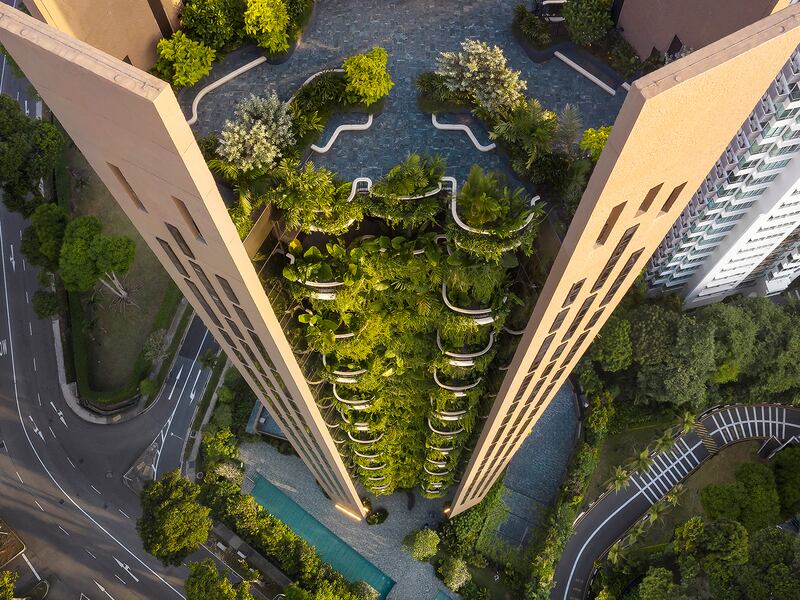
These chime with our pressing need to combat climate change because they are designed to mitigate the urban heat-island effect (urban areas that are warmer than surrounding rural land due to human activity) and encourage biodiversity. Today’s vertical forests absorb carbon, improve air quality, cool buildings, and reduce stress-inducing noise pollution.
Related: Learn How to Live Off the Grid
A decade ago, the height of skyscrapers was cause for wonder as cities competed to build the tallest towers on Earth. True, these fulfilled an important function, providing much-needed high-density housing. But now architects are calling into question the classic, generously glazed skyscraper and its monolithic, geometric outline and are dreaming up vertical forests whose forms are often asymmetric and organic.

A major pioneer in this field is Italian architect Stefano Boeri, who experienced an epiphany on a trip to Dubai in 2006 where he was perturbed by its sea of skyscrapers. “I thought, ‘Glass is an amazing material, but making everything in the desert out of glass—I’m not so sure,’” he recalls. “I started thinking we needed a new approach.” This led to the creation of his first vertical forest in the Porta Nuova area of Milan, completed in 2014.
Glass is an amazing material, but making everything in the desert out of glass, I’m not so sure, I started thinking we needed a new approach—Stefano Boeri
His practice, Stefano Boeri Architetti, describes it as the “prototype building for a new format of architectural biodiversity.” Now a world-famous, emblematic example of the vertical forest, it consists of a 367-foot-high (112 m) tower and a 262-foot-high (80 m) tower housing 800 trees and 5,000 shrubs. It ticks several boxes: its greenery counteracts air and noise pollution and absorbs carbon, while its high-density housing was conceived as an antidote to urban sprawl.
Two years later, Boeri envisioned Liuzhou Forest City in the mountainous but very overpopulated and smog-wreathed province of Guangxi in southern China. The metropolis—a green satellite to nearby city Liuzhou, with the two conurbations linked by rail and roads for electric cars—will incorporate about 40,000 trees and a million plants of more than 100 different species. It will generate its own wind and solar energy and also use geothermal energy, allowing it to be self-sufficient.
This summer Boeri, as Stefano Boeri Interiors, worked with the shoe brand Timberland on The Floating Forest installation at Milan Design Week, to further promote the idea of “regreening” urban areas. “We know so well the advantages of this intensity and density of plants and trees—they clean the air, they absorb CO2, they produce oxygen, and they reduce the heat,” he said of the floating work.
While Boeri is busy exporting his vision of vertical forests worldwide, the city-state of Singapore has been at the vanguard of the green architecture movement since the 1960s when its first prime minister, Lee Kuan Yew, advocated sustainability out of necessity, decreeing that it should aim to be a “city in a garden.” With its high-density, built-up environment and tropical climate, Singapore is particularly susceptible to the urban heat-island effect. Green policies, gradually phased in since the early 2000s—including vertical sky gardens and rooftop urban farms cultivating fruit and vegetables—help to mitigate this.
We know so well the advantages of this intensity and density of plants and trees: they clean the air, they absorb CO2, they produce oxygen, and they reduce the heat—Stefano Boeri
So, it’s hardly surprising that London-based architect Thomas Heatherwick has created his project, Eden, in Singapore. Commissioned by Swire Properties and completed in 2019, this apartment block radically departs from what the practice describes as “the glass-and-steel tower typology.” It enables the occupants of its 20 apartments to enjoy views of tree-lined streets while feeling removed from frenetic city life in private homes whose balconies brim with tropical plants.
Related: Discover the Trees Making a Statement in Top Architecture
Ripping up the rectilinear format of apartments traditionally found in high-rise blocks, this design features homes with a Y-shaped layout. Their centrally located living area is fronted by windows framed by greenery that cools the interiors. At the foot of the tower is a densely planted garden and swimming pool with green tiles that simulates a natural lake.
Meanwhile, the rapid rate of urbanization and concomitant loss of vegetation in Vietnam motivated the country’s VTN Architects to combat this with its 21-story green architecture project Chicland Hotel. Incorporating a lobby, restaurant, and rooftop spa with an infinity-edge pool, this was conceived as a riposte to its location—Da Nang, a built-up tourist destination. It bills itself as an “exemplary” project to be emulated in other tropical cities such as Ho Chi Minh City, Hanoi, Jakarta, or Bangkok. Each floor has concrete planters providing sky gardens for all rooms.
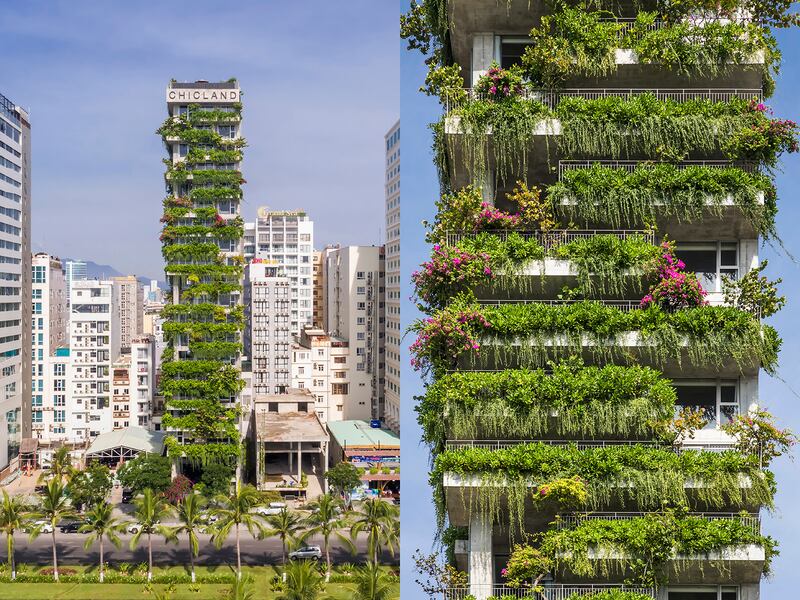
A crucial aspect of vertical forests is choosing the right planting to optimize its benefits. Indigenous vegetation, suited to the climate the building is found in, is essential. “Chicland Hotel is near the sea and subjected to severe storms,” says its lead architect Nguyen Van An. “We chose plants that grow well in this coastal environment—maple tree, sea vine, sea primrose, Indian chrysanthemum, and mountain fortune tree. The greenery on the balconies filters out pollution and strong sunlight and reduces noise levels. We had to select the appropriate types of plants and soils for the balconies according to their height. Bougainvillea and Indian chrysanthemums are found on the lower levels to protect them from strong winds.”
Related: Find the Top 10 Eco-Friendly Features for Modern Homes
Another determinedly green project is Valley, a mixed-use, 807,293-square-foot (75,000 sq m) development in Amsterdam with apartments, offices, shops, restaurants, and cultural amenities, designed by Dutch firm MVRDV. Calling to mind a futuristic canyon, it’s intended as a green antidote to the predominantly conventional, commercial architecture of the neighboring Zuidas financial district.
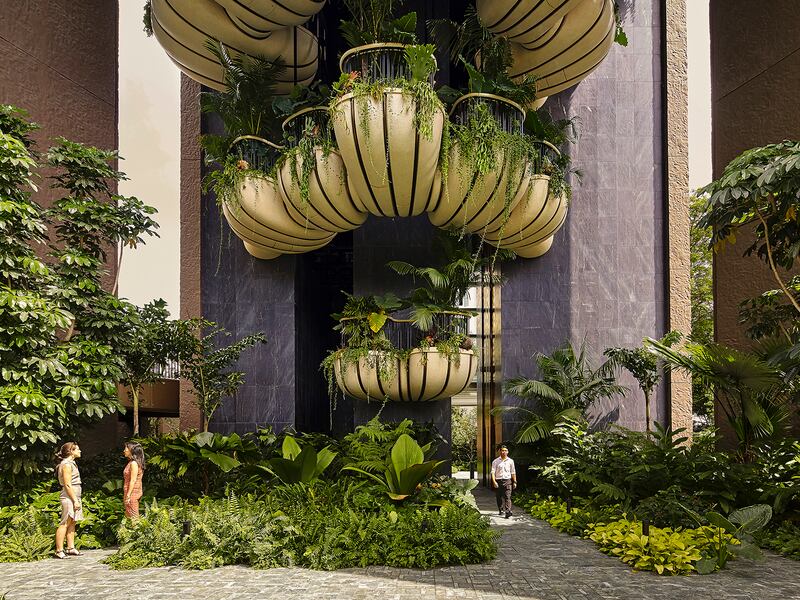
A key trait of vertical forests is their irregular forms, and Valley is no exception: it comprises three towers at different heights. The craggy silhouette of its stone-clad balconies evokes rock faces, and the terraced podium linking the towers resembles a valley. It houses 200 apartments, all different in design. An internal atrium, called Grotto, has two skylights flooding the space with daylight, mirrored at ground level by two ponds that cool the interior.
Dutch garden designer Piet Oudolf has added 13,500 trees and plants, watered by automatic irrigation systems, to Valley’s outer layer. In time the building will be carpeted by a verdant carapace. “We worked with city ecologists who assessed the project’s ability to increase biodiversity,” says Gijs Rikken, associate design director at MVRDV. “One thing they did was to ensure the towers offered the right conditions to attract butterflies from nearby gardens.”
We worked with city ecologists, who ensured the towers offered the right conditions to attract butterflies from nearby gardens—Piet Oudolf
By contrast, another vertical forest, Mata Atlântica Tower, designed by French starchitect Jean Nouvel and part of Rosewood São Paulo Hotel, meshes with an existing local, leafy monument—Matarazzo Maternity, a former hospital nestling within a park. “The tower was designed to be the verticalization of the park,” says a spokesperson from the practice. Terraces on the tower’s façade are planted with the same species of trees, for example ipê and pau brasil, as those found in the park.
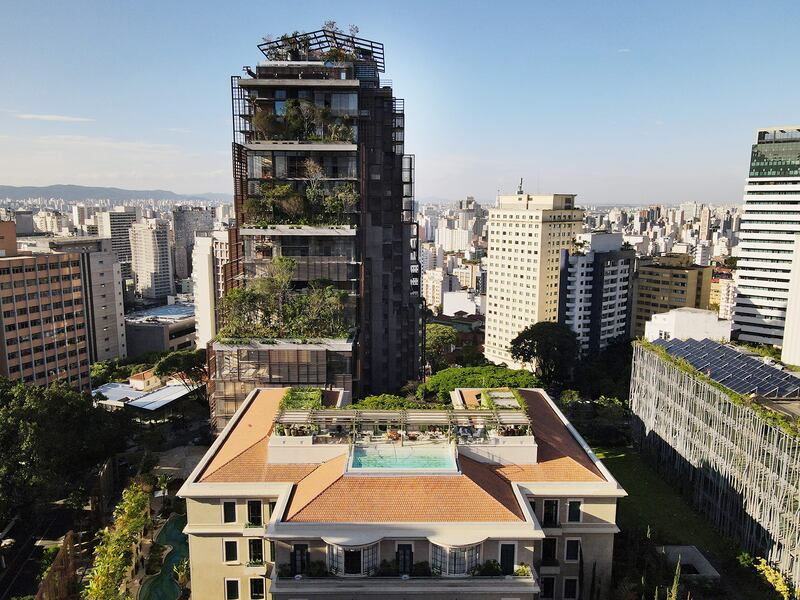
Rosewood São Paulo Hotel’s interiors were designed by Philippe Starck. “The project’s developer, Alexandre Allard, requested that Starck source and create a design project using 100 percent Brazilian resources, the finest natural materials, and expert craftsmanship,” continues the spokesperson. “By procuring local materials and labor, significant environmentalist gains were made in terms of avoiding intercontinental transport and greatly reducing the carbon footprint.”
One important aspect of the vertical forest phenomenon is that it doesn’t appear fully formed overnight. Green architecture takes time to come into its own as its trees mature and form shady canopies. While the vertical forest trend is blossoming, it will be a while before our cities fully turn from gray to green.
On the Market
Villa Mosca Bianca, Lake Maggiore, Italy
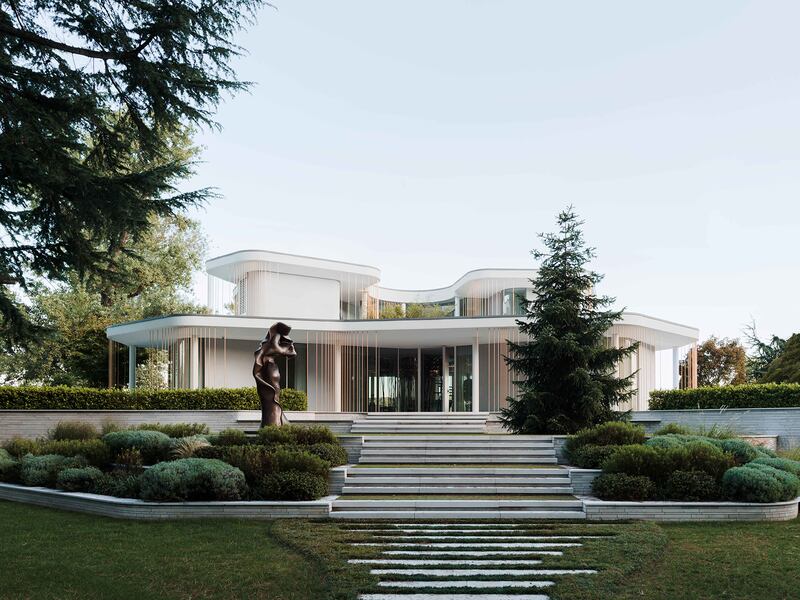 Opens in new window
Opens in new windowWith sustainable features including solar panels, heat pumps, and passive ventilation, this grand waterfront villa, on the market with Benedetti Real Service, delivers the ideal balance of high-tech living and environmental sensitivity. Surrounded by sweetly scented pine forest, the home is a work of art, with direct lake access and a dock, plus stunning views from the terraced gardens.
The Urban Mountain III, Taipei City, Taipei
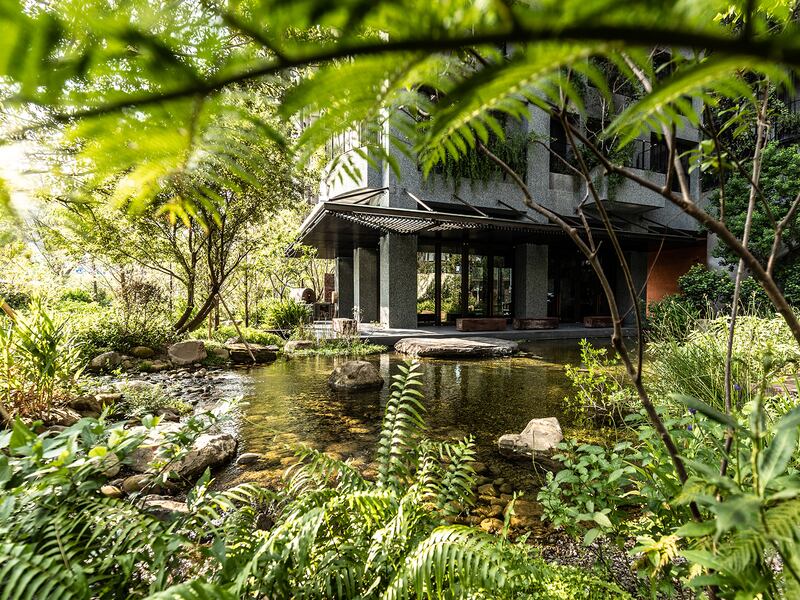 Opens in new window
Opens in new windowLush vertical planting on the outside of the structure gives an awe-inspiring first impression of The Urban Mountain, inspired by the beauty of Litou Mountain. Its green credentials are mirrored in the interiors, with a skillful use of stone and wood aligning with the leafy exterior and creating a tranquil atmosphere. It is on the market with Jubon Assets Management.
Banner image: Chicland Hotel, Da Nang, Vietnam


